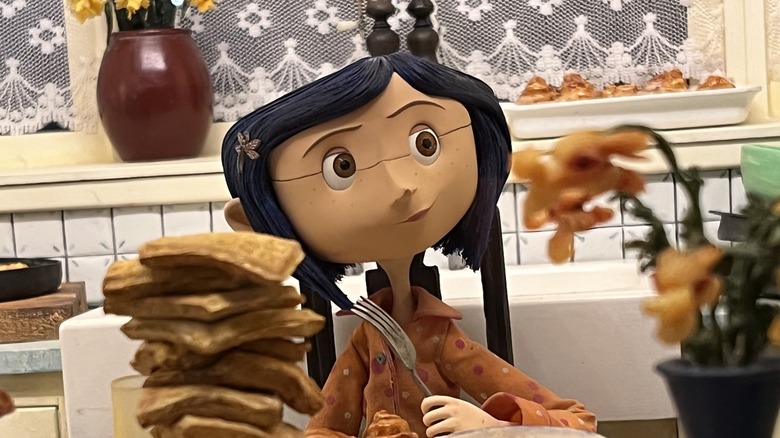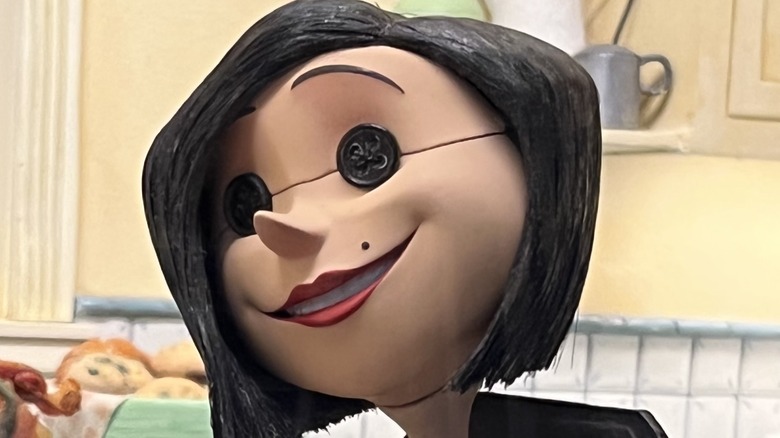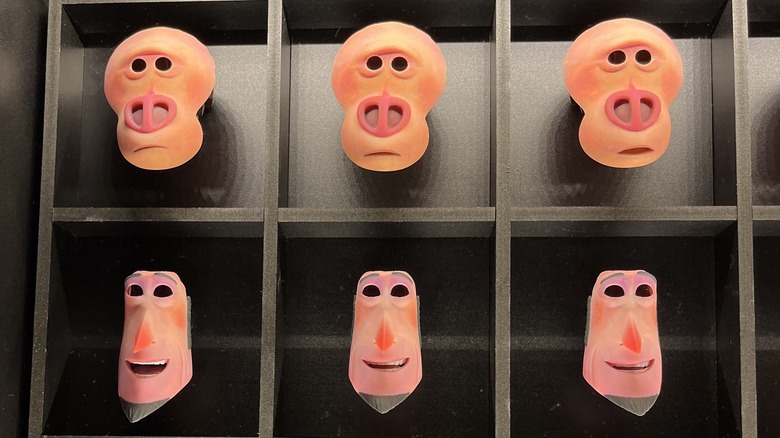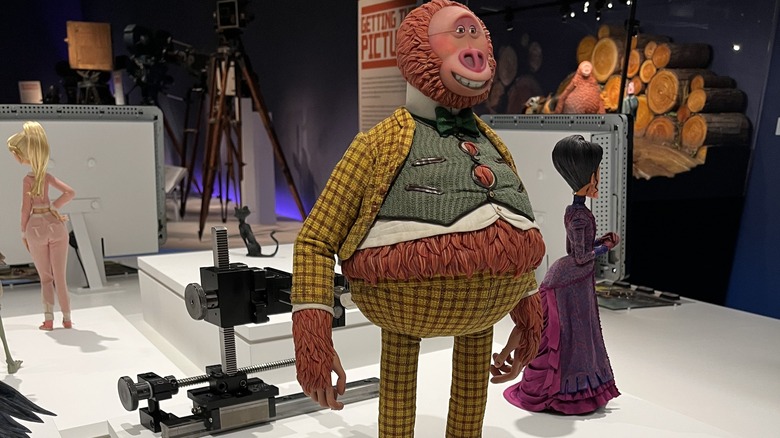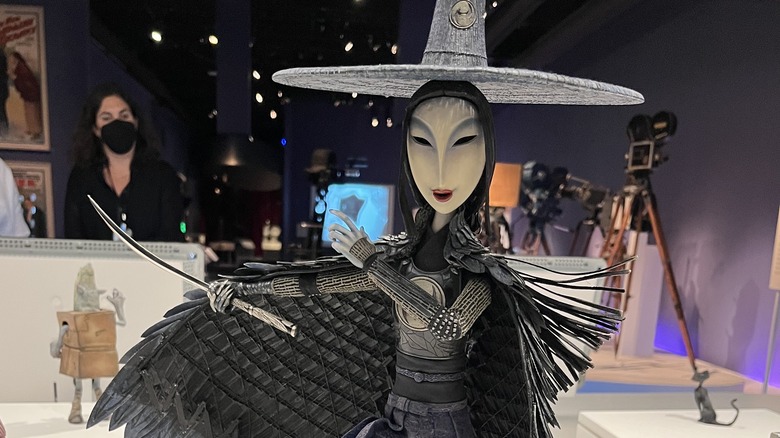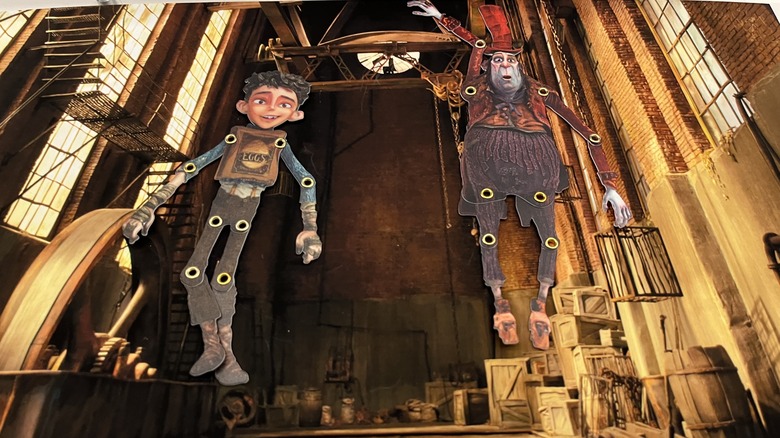The LAIKA: Life In Stop Motion Exhibit At The Museum Of The Moving Image Showcases The Legacy Of The Animation Studio [Exclusive]
"They're not models!" the curator immediately corrected me when I erred in describing the miniatures puppets on display.
In an age of computer-generated 3D overtaking pop culture consciousness, the Oregon-based stop-motion studio Laika (also stylized as LAIKA) shoots for the stars, creating an alive "it's actually there" tangibility. Founded in 2005, Laika has raked in recognition from prestige circles, earning nods from the Academy Awards, Annie Awards, and a Golden Globe win. Now the textured puppets of Laika have stop-motioned their way to New York's Museum of the Moving Image for the "LAIKA: Life in Stop Motion" exhibition.
I had a chat with curator Barbara Miller and LAIKA's Marketing Production Manager Dan Pascal to get to know these puppets and the evolution of Laika. An exhibit 10 years in the making, it spotlights characters and sets from Laika classics: from "Coraline" (2009), "ParaNorman" (2012), "The Boxtrolls" (2014), "Kubo and the Two Strings" (2016), and "Missing Link" (2019).
From hand-painting to printed color
The exhibit features the blue-haired Coraline among a heap of mouthwatering waffles, sitting with the button-eyed Other Mother and Other Father in the kitchen set. Because "Coraline" is a freckled puppet, you can only imagine the time spent on continuity. Pascal illuminated the initial strain:
"It was, 'How many freckles for Coraline and how many can she have?' Because every time she talks, they move so some poor painter has to put all of those freckles on to be consistent so they can't just disappear from face to face."
Laika can boast of weaponizing the cutting edge for a visual feast, and its innovations in 3D printing earned it a Scientific and Technology Oscar in 2016. So how has the technology of Laika evolved from "Coraline" to its latest "Missing Link"? For one, 3D printing grew sophisticated. Whereas the assets of "Coraline" had to be painted by hand, the following "ParaNorman" and subsequent features were equipped with a 3D printer that can print the color straight away.
The faces
Highlighting the company's feature debut with "Coraline" and then emphasizing the latest release "Missing Link" was the logical organization for curator Barbara Miller. One "Missing Link" display demonstrates how the naturalistic performances of the puppet hinge on a hefty supply of faces. It illuminates a batch, laid out like cookies, of the varied grinning, angry, or astonished expressions of "The Missing Link" main trio: the investigator Sir Lionel Frost, the good-natured "Link" (who chooses the name Susan for himself), and the adventurer Adelina Fortnight. Miller said the 24 faces for each character laid out represents the "24 frames per second that the characters are shot in." More than 100,000 faces were printed for "The Missing Link."
Explaining the function of the 3D printer, Dan Pascal said, "Doesn't make a difference how wide a print is. It makes a difference how deep it is." Something as deep as the Kubo moon beast face — 20 masks that fit at maximum on the tray — from "Kubo and the Two Strings" took about 24 hours to print.
Keep the puppet standing
Version one of a puppet can require an estimated 8 to 12 months in order to test the design. After that, "by the time you get to version four, everything's sorta out," said Dan Pascal. Note that the Missing Link puppet is the only guy among its Laika museum siblings that bears a large conspicuous rig to prop up his weight. The only other feature "rigged" puppet on the same table is the Sister, but with a simpler slender rod. In the movie, the Link weighs about 650 pounds, or "more like you know 630 pounds" if you believe him that his hair just makes him look heavier. Pascal estimated the literal Link puppet as eight or ten pounds.
"When you get a smaller puppet like Kubo for example, he's not too top heavy," Pascal said. So the larger and weightier the puppet gets, the trickier the stability. "All of their weight is going on [the larger puppets'] ankles, which are quite small little metal joints." He called the attachment between the rig and the Link's puppet's back a "jetpack."
A neck cowl and cape of piano wires
The Link's "neck cowl" on his unclothed model took 8 to 12 months to work out as well. A slight movement could cause the inner silicone to blob out. "You know, Link is referred to lovingly as a hairy avocado because of that shape," Dan Pascal said, laughing. "We want to retain that but then they had to work out a way that they could move his head and not have that big silicone displacement." An interior honeycombed neck cowl secured the silicone.
Accompanying the Link is one of the sinister Sisters of "Kubo and the Two Strings," cloaked in a cape interwoven with piano wire — the most enthralling detail of the exhibit in my opinion (though I am very biased toward her design). Though a cape on one of the taller puppets sounded like a technical worry at first— "scared everyone to death," said Pascal — it turned out the cape was so malleable that they didn't have to construct many different versions to swap in and out. "Every shot in that movie with this Sister is the Sister's same cape. It can flex, it can fly, it was pose-able," remarked Pascal. "It was a real feat of engineering from the puppets department."
The legacy of human hands
The "LAIKA: Life in Stop Motion" exhibit also invites visitors kids and adults to reenact a fraction of the painstaking at the eight stop-motions stations, with a flat environment modeled from the movies and their respective 2D Laika character figures (I made the Missing Link and Lionel Frost high-five and the Snatcher toss Eggs into the air!). A record button allows them to capture a frame, adjust a joint, and accumulate the different frames into a clip that they can send to themselves as a souvenir or a mini-film to show off on social media.
The Laika exhibit makes for a wonderful companion to the Muppet-populated "Jim Henson Exhibition" exhibition one floor below, where felt characters are handcrafted and motioned to life with the direct contact of human hands, and one room permits the users to play puppeteer with a Muppet "on air."
Dan Pascal promises another epic action adventure in the upcoming "Wildwood," Laika's sixth film, helmed by Travis Knight and currently in production. For Barbara Miller, she's pleased to feature its current Laika repertoire. She shared, "We're celebrating [these classics] so it's not just like 'here's the new thing, everybody'; It's a chance to look back on all of this excellence that Laika has created over time and really look at the legacy."
The Museum of the Moving Image will also screen Laika films at its Redstone Theater. The exhibit will run until August 27, 2023.
